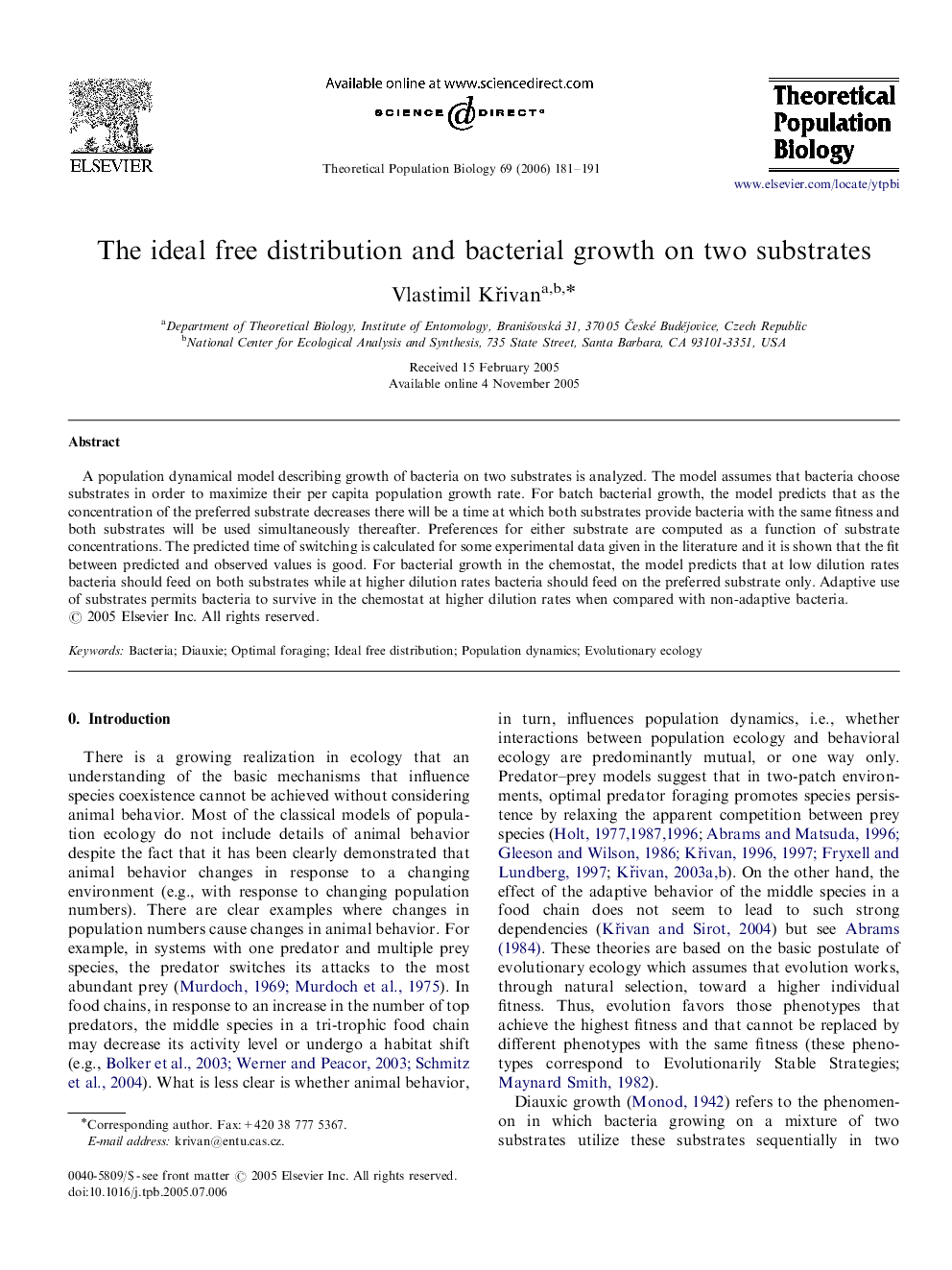| Article ID | Journal | Published Year | Pages | File Type |
|---|---|---|---|---|
| 4503043 | Theoretical Population Biology | 2006 | 11 Pages |
Abstract
A population dynamical model describing growth of bacteria on two substrates is analyzed. The model assumes that bacteria choose substrates in order to maximize their per capita population growth rate. For batch bacterial growth, the model predicts that as the concentration of the preferred substrate decreases there will be a time at which both substrates provide bacteria with the same fitness and both substrates will be used simultaneously thereafter. Preferences for either substrate are computed as a function of substrate concentrations. The predicted time of switching is calculated for some experimental data given in the literature and it is shown that the fit between predicted and observed values is good. For bacterial growth in the chemostat, the model predicts that at low dilution rates bacteria should feed on both substrates while at higher dilution rates bacteria should feed on the preferred substrate only. Adaptive use of substrates permits bacteria to survive in the chemostat at higher dilution rates when compared with non-adaptive bacteria.
Keywords
Related Topics
Life Sciences
Agricultural and Biological Sciences
Agricultural and Biological Sciences (General)
Authors
Vlastimil KÅivan,
